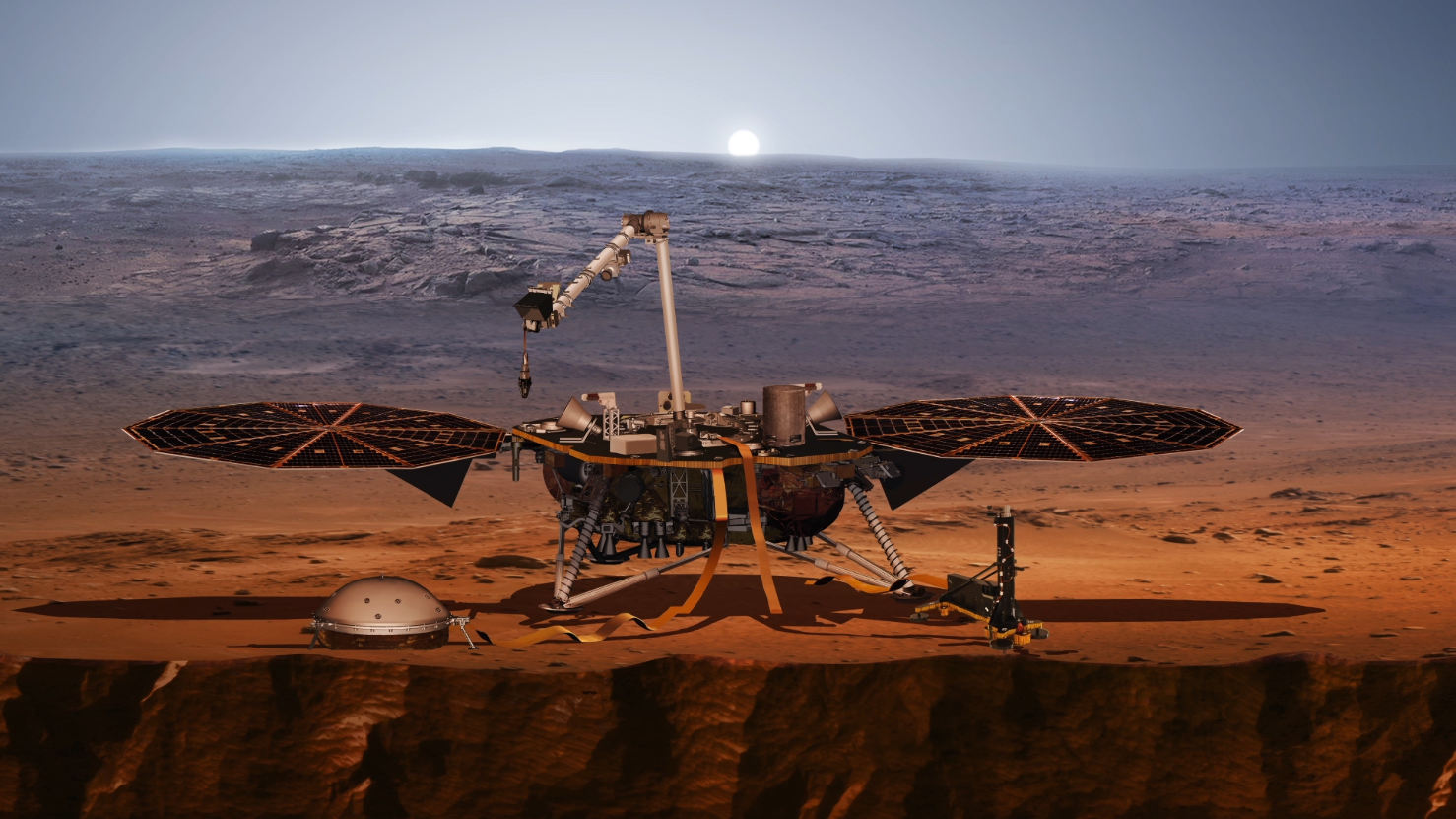Recovering from a two-year postponement, NASA’s next spacecraft to Mars, InSight, is picking up momentum in preparation for launch next May.
After a two-year postponement due to issues with one of its two primary instruments, NASA’s next spacecraft to Mars, InSight, is picking up momentum in preparation for launch next May from Vandenberg Air Force Base, California — the first interplanetary launch in history from America's West Coast.
InSight (Interior Exploration using Seismic Investigations, Geodesy and Heat Transport) is the first mission to focus on examining the deep interior of Mars. Information gathered will boost understanding of how all rocky planets formed, including Earth.
The mission's launch was originally planned for March 2016, but was called off due to a leak into a metal container designed to maintain near-vacuum conditions around the seismometer's main sensors. A redesigned vacuum vessel for the instrument has been built and tested, then combined with the instrument's other components and tested again. The full seismometer instrument was delivered to the Lockheed Martin spacecraft assembly facility in Colorado in July and has been installed on the lander.
Following launch during a five-week period beginning May 5, 2018, the mission is scheduled to reach Mars the Monday after Thanksgiving in 2018. After landing near Mars' equator, InSight will use a robotic arm to place its two main instruments directly and permanently onto the Martian ground. These two instruments are:
• A seismometer, supplied by France's space agency, CNES, with collaboration from the U.S., UK, Switzerland and Germany. Shielded from wind and with sensitivity fine enough to detect ground movements half the diameter of a hydrogen atom, it will record seismic waves from "marsquakes" or meteor impacts that reveal information about the planet's interior layers.
• A heat probe, designed to hammer itself to a depth of 10ft (3m) or more and measure the amount of energy coming from the planet's deep interior. The heat probe is supplied by the German Aerospace Center, DLR, with the self-hammering mechanism from Poland.
A third experiment will use radio transmissions between Mars and Earth to assess perturbations in how Mars rotates on its axis, giving clues about the size of the planet's core.

